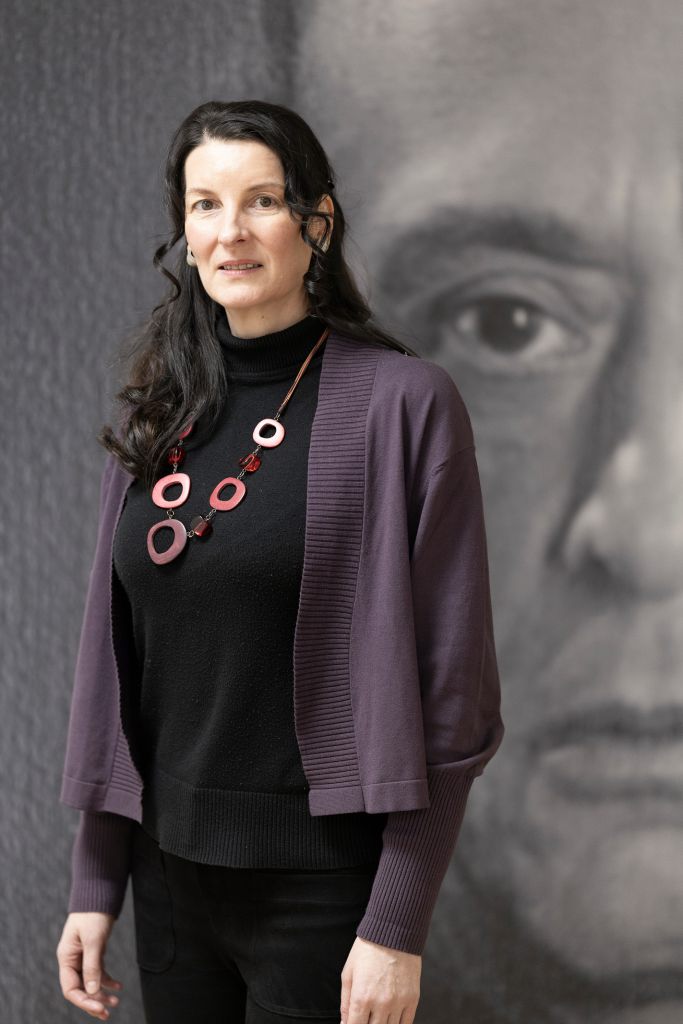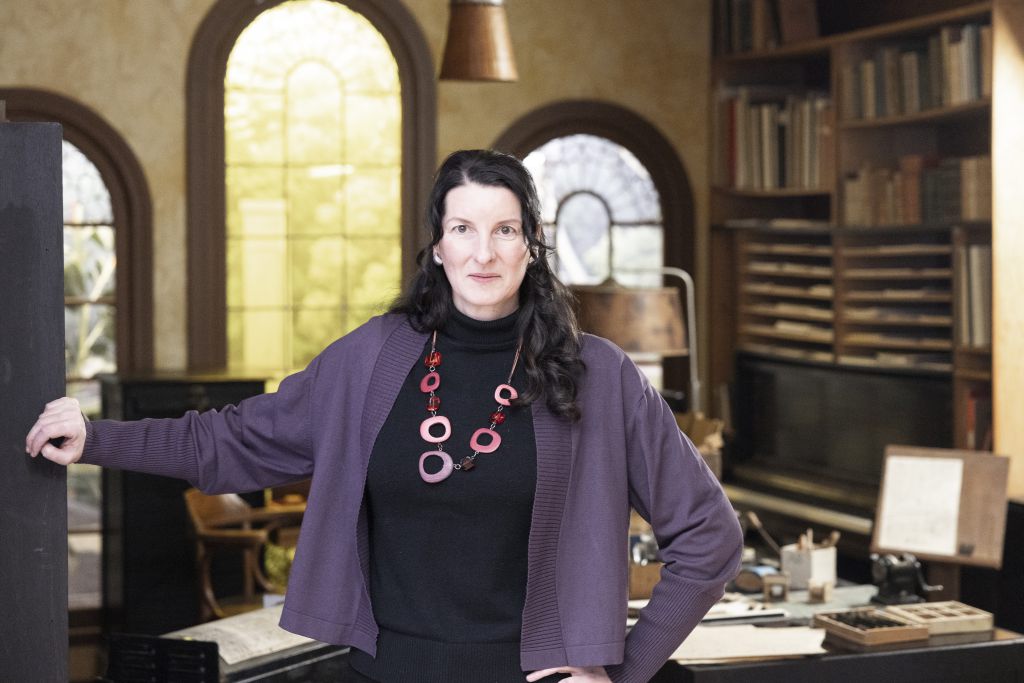His 150th birthday is in 2024—a jubilee year featuring numerous events in tribute to Arnold Schönberg, a universal artist and a pioneer of musical modernism. And Ulrike Anton, director of Vienna’s Arnold Schönberg Center, can now look back on her first full year.
You became director of the Arnold Schönberg Center in March 2023; how would you sum up the months since then?
Ulrike Anton (UA): First of all, it’s a great joy and honour to be the director of this institution. Over the 25 years since its establishment, the Arnold Schönberg Center has accomplished a huge amount in terms of research, exhibitions, and concerts. We have a wealth of resources to draw on in our education and outreach work concerning Schönberg’s life and oeuvre, and we can now looking back upon an exciting period. So it was all the more amazing for me, personally, to be given the opportunity of coming on board as director in the run-up to 2024’s celebrations of Schönberg’s 150th birthday. I was welcomed with open arms by a fantastic team who’ve since given their all and provided me with a huge amount of support—which has suited me very well, since I put quite a bit of passion into every mission I choose to pursue. It’s been an intense phase between March 2023 and today that we’ve used to bring more Schönberg to Vienna. In the process, we’ve been successful in networking with other venues and institutions and also established some new instances of cooperation. The fruits of these efforts will now be seen over the course of 2024 as well as beyond, I’m sure.

2024’s jubilarian Arnold Schönberg is set to be very present. What all is planned?
UA: For the first half of this year, we’ve brought together a total of 129 events organised by 26 partners at 16 different venues in Vienna and environs (the Schönberg House in Mödling also belongs to our foundation) under the Schönberg 150 label. The City of Vienna asked the Arnold Schönberg Center to coordinate this together with the festival Wien Modern, and our important cooperating partners include the Vienna Musikverein, Superar, and MusikTheater an der Wien, to name just a few. At the Center itself, we’ll be looking forward to a celebratory concert with members of the Vienna Philharmonic along with two new jubilee-year exhibitions coordinated by Therese Muxeneder. What’s more, a whole series of concerts, performances, and academic events will be held in cooperation with the mdw. Highlights here include a visit by the Arditti Quartet—which is itself celebrating its 50-year performing anniversary—for a public master class at the mdw and a concert at the Arnold Schönberg Center, a concert by the Webern Ensemble Wien featuring Schönberg’s Suite op. 29, the study day on Schönberg and Nono, and the project Verklärte Nacht Unveiled with a lecture by Eike Feß.
How will your previous professional experiences be informing your current area of work?
UA: I’m well networked thanks to my activities as a flutist and my speciality of music composed in exile, all of which helps me in my diverse responsibilities here. The core component of the Arnold Schönberg Center is its archive, which has been home to Schönberg’s legacy for 25 years—and then we have the concerts and their programming, of course. A further topic close to my heart is that of the women who studied with Schönberg, including Vilma von Webenau and Dika Newlin, and they need to be made more visible—after all, Schönberg didn’t just have male students. We also maintain cooperative relationships both across Austria (European Capital of Culture Bad Ischl Salzkammergut 2024, etc.) and internationally that become visible in worldwide exhibitions like those at Theater Bonn and the Berliner Philharmonie as well as at Austrian Cultural Forum locations. And it’s particularly important to me personally that we build out our mediatory activities and ensure them a presence in the city, to which end we’ve met with the Vienna Board of Education as well as with Public Learning Centres Vienna—which has now augmented its programming by the project LEARN TO HEAR in cooperation with the mdw’s Department of Music Education Research, Music Didactics and Elementary Music Education. And in collaboration with Superar, there’s our mediation programme for children as well as Schönberg focuses in concerts.

The spectrum covered by the Arnold Schönberg Center’s activities is certainly a broad one. Do you have a favourite place here, or an object that you’re particularly fond of exhibiting?
UA: As a flutist, I’m especially fond of the wind quintet by Arnold Schönberg—and in our most recent exhibition, we showed the famous wheel chart that he used to figure out this twelve-tone work. That’s an object that’s special to me. In the exhibition, we attempted to convey how twelve-tone technique arose over the course of a long process and how Schönberg kept on developing it. As Schönberg himself said to his students, “One always has to keep searching!”
When it comes to Arnold Schönberg, the first thing that many people think of is his twelve-tone technique—which isn’t the whole story, however. To him, that was more grammar than it was a substantive statement.
UA: Exactly. He thought of this method as simply a means to an end; the expressivity is what actually matters. That was also one of my key experiences when I first tried to grasp Schönberg. During my doctoral studies at the mdw, I got to know Richard Hoffmann—who was Schönberg’s last personal assistant. Hoffmann recalled to me in a very lively way how practically oriented Schönberg’s teaching was, how he was able to explain things well and very simply. Expressiveness in the interpretation of his works was always what was most important, and never—as implied by frequently expressed prejudices—their technical and mathematically calculated aspects. That came across to me in a particularly vivid way in a lesson with Richard Hoffmann that’s been burned into my memory ever since. And what it means is that when you hear or play music composed according to the twelve-tone method, you have to try and find an expression in every interval; that’s the central point of this method.
Prior to that experience as a student: Can you still remember the first time you consciously encountered Schönberg’s music? Was there some formative listening experience?
UA: The very first work by Schönberg that I experienced consciously was A Survivor from Warsaw, which my brother—who’s four years my senior—had as a topic for his Matura in music. He listened to it lots of times on our stereo at home, and I came to understand the political dimension of its theme. That work touched me deeply. And the realisation I came to on my own, then, was that one just couldn’t express the substance of its theme with a wonderful melody—even if I didn’t yet know anything about the twelve-tone method or other such things.
Do you have a favourite work by Arnold Schönberg? And if you could talk with him for an hour, what would you ask him?
UA: Yes, his violin concerto is a work that I find fascinating. And being a flutist, I’d naturally have to ask him why he never wrote a flute concerto. The flute does play a big role in Pierrot lunaire, and it’s also present in his wind quintet—but he really could’ve written more wind chamber music, and a solo concerto would’ve also been nice. Another work that fascinates me is The Book of the Hanging Gardens. With Schönberg in particular, you have to listen to a work several times—and above all, you need to experience it several times live in concert.
What work would you recommend to someone who isn’t yet familiar with Schönberg? What should one listen to first?
UA: Definitely Transfigured Night! That piece is more accessible in terms of its harmonies. And then his Chamber Symphony op. 9, which marked a real turning point in Arnold Schönberg’s composing style where this successive “emancipation of dissonance” already becomes clear. So those would be my two “works for beginners”.
Schönberg, of course, isn’t just known as a composer; he also created things of significance in many other realms of art and life.
UA: Yes, that’s definitely another fascinating thing about him—this unbelievably great and alert intellect. The fact that he wasn’t just a composer but also a painter, teacher, inventor, theoretician, and so much more. One gets the feeling that if he hadn’t composed, he would’ve had to do something else—like invent an interchange plan for the Berlin underground or something. Or more things like the coalition chess game and travel roulette set that we have at the Archive of the Arnold Schönberg Center. It’s this creativity that was always there. His daughter Nuria Schönberg tells this story about how, in addition to his study, there was a room where he kept all of his technical inventions. It would be interesting to see how Arnold Schönberg would feel in today’s world—he’d definitely be open to all of the new media and technologies. And that’s an aspect of him that goes well with one of our 2024 highlights, which we presented in February: a virtual reality game to go with the Staatstheater Augsburg’s production of Schönberg’s Erwartung. Schönberg would’ve loved that. But in most of our concerts at the Arnold Schönberg Center, we also tie in works by other composers alongside Schönberg’s own works. Be it in retrospect—like in combination with works of Viennese Classicism or by other Schönberg models like Johannes Brahms or Gustav Mahler—or looking towards the future, which is even more the case in this jubilee year of 2024. How do today’s composers relate to Schönberg? In this regard, we’re extremely pleased that we’ll be able to present a composer’s portrait with Olga Neuwirth in cooperation with the mdw—and that the Arnold Schönberg Center can hence also be a home for the music that’s being composed today.

